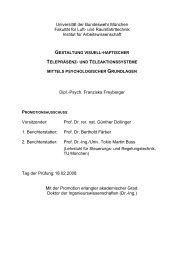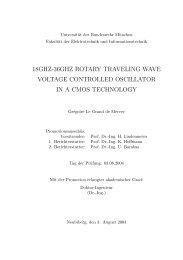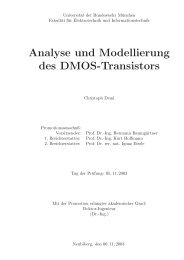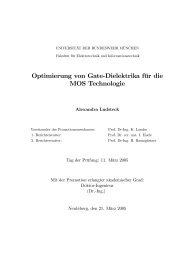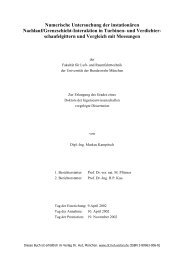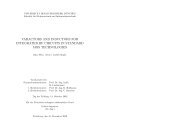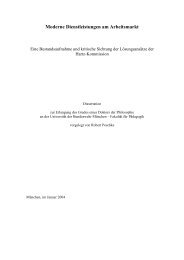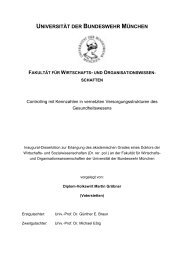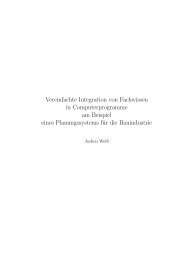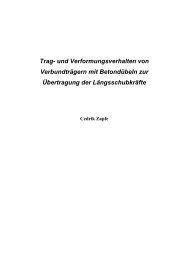Precise Orbit Determination of Global Navigation Satellite System of ...
Precise Orbit Determination of Global Navigation Satellite System of ...
Precise Orbit Determination of Global Navigation Satellite System of ...
You also want an ePaper? Increase the reach of your titles
YUMPU automatically turns print PDFs into web optimized ePapers that Google loves.
Chapter 8 Geostationary <strong>Orbit</strong> <strong>Determination</strong> And Prediction During <strong>Satellite</strong> Maneuvers<br />
CHAPTER 8 GEOSTATIONARY ORBIT DETERMINATION AND<br />
PREDICTION DURING SATELLITE MANEUVERS<br />
Geostationary satellites (GEO) are important candidates for the GNSS-2 system. Theoretically, a geostationary<br />
orbit is one where the orbit has the same period as the earth's rotation period, and remains at a “fixed” point on<br />
the sky at all times and stationary over a single point on the Earth's surface. The orbit is a circle and the orbit<br />
must lie in the earth's equatorial plane.<br />
Because <strong>of</strong> various perturbations such as nonspheric earth gravitation, solar and lunar attractions, once a satellite<br />
is placed in the proper position <strong>of</strong> geostationary orbit, it doesn't stay there, it tends to drift.<br />
Geostationary satellite drifts can be divided into two parts, one is the in-plane drift and the other is the out-<strong>of</strong>plane<br />
drift. The in-plane drift is caused by changes <strong>of</strong> the orbital parameter longitude <strong>of</strong> the ascending node, Ω .<br />
The out-<strong>of</strong>-plane drift is produced by variation <strong>of</strong> the orbital parameter inclination <strong>of</strong> orbit, i.<br />
When geostationary satellite drifts away from its “fixed” position, satellite maneuver or station keeping<br />
operation will be started. The operation frequency is dependent on the deadbands, normally 0.1 degree or larger.<br />
Regular weekly or two weekly longitude maneuvers may be preferred for simplicity, inclination maneuvers will<br />
be less frequent, larger and will normally have an in-plane component that will need to be corrected rapidly<br />
(Dow, 1999). For almost weekly maneuvers, geostationary satellite is very difficult to be used for navigation<br />
application purpose.<br />
MEO and IGSO satellites also meet the maneuver problems, but it is not so serious as GEO satellites, because<br />
the frequencies <strong>of</strong> maneuver operation for MEO and IGSO are much lower than for GEO satellites. Therefore in<br />
this chapter, the emphasis is on GEO satellite maneuvers. The kinematic orbit determination method discussed in<br />
Chapter 6 will be used to solve this problem during GEO satellite maneuvers.<br />
8.1 Perturbations <strong>of</strong> Geostationary <strong>Satellite</strong><br />
For geostationary satellite maneuvers or stationkeeping, the changes <strong>of</strong> orbital parameters longitude <strong>of</strong> the<br />
ascending node Ω and inclination <strong>of</strong> orbit i under influence <strong>of</strong> the perturbations are very important. The<br />
changes <strong>of</strong> these two parameters are analyzed as follows.<br />
The orbital elements and time are related to perturbation functions by the following system <strong>of</strong> differential<br />
equations, also called Lagrange equations:<br />
da R<br />
=<br />
dt na M<br />
de e R e R<br />
=<br />
dt na e M na e<br />
d<br />
i R e R<br />
dt na e i i na e e<br />
di<br />
R i R<br />
dt na e i na e i<br />
d<br />
R<br />
dt na e i i<br />
dM e R R<br />
n<br />
dt na e e na a<br />
−<br />
−<br />
−<br />
−<br />
=−<br />
+<br />
−<br />
−<br />
=<br />
+<br />
−<br />
−<br />
=<br />
−<br />
= − −<br />
2 ∂<br />
�<br />
∂<br />
�<br />
�<br />
2<br />
2<br />
1 ∂ 1 ∂<br />
�<br />
2<br />
2<br />
�<br />
∂<br />
∂ω<br />
�<br />
2 �<br />
ω cos ∂ 1 ∂ �<br />
2 2<br />
2<br />
1 sin ∂<br />
∂ �<br />
�<br />
�<br />
1 ∂ cos ∂ �<br />
2 2 2 2 �<br />
1 sin ∂Ω<br />
1 sin ∂ω<br />
�<br />
Ω 1 ∂<br />
�<br />
�<br />
2 2<br />
1 sin ∂<br />
�<br />
2<br />
�<br />
1 ∂ 2 ∂<br />
−<br />
�<br />
2 ∂ ∂<br />
��<br />
95<br />
(8-1)



